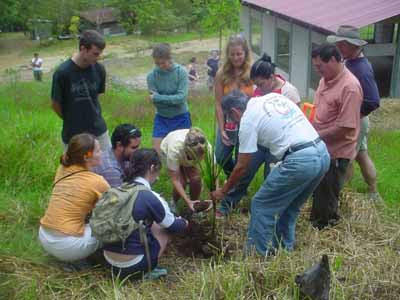Michelle S. (Program Participant) with Baby Leatherback Sea Turtle
Our volunteer work at Las Baulas National Park included collecting data on baby leatherback turtles. In addition, those that emerged from their nest during daylight hours were re-released at night to
increase their chances of survival.
increase their chances of survival.

Leatherback Sea Turtle Conservation: Volunteer Work Schedule
The course included a four-day volunteer service-learning visit to Las Baulas National Park to assist with conservation efforts of the endangered Leatherback sea Turtles. There we worked in shifts protecting the hatchery during the day, and patrolled the beach at night for nesting females to collect data and ensure the safety of the eggs.
Field Station at Las Baulas National Park
The meeting area of the field station at Las Baulas National Park, Playa Langosta sector--where we assisted with conservation efforts of the endangered leatherback sea turtles.
















